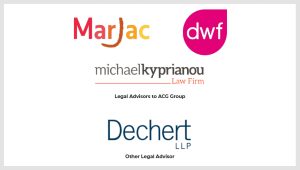When should a lawyer consider appointing an expert?
In an ideal world, a lawyer should consider instructing a collision investigator in any road traffic case. However, such considerations are often driven by financial constraints.
It is impossible to provide a set of rules to allow a lawyer to determine when they should and shouldn’t instruct a collision investigator. It is not uncommon for a client to attempt to reconstruct a collision themselves based upon their own personal knowledge and experience. In today’s world, most people drive and have either been involved in or been witness to, a collision. This often leads to a DIY attitude towards collision reconstruction.
A good collision investigator will have dealt with and reconstructed many hundreds, or even thousands, of collisions. Their true ability will be evidenced in them providing the lawyer facts that they didn’t know rather than a summary of the evidence already known. Therefore, any personal assumptions must be treated with caution.
Furthermore, a good expert should have a consultation with their client and understand their position and any financial constraints.
For example, FCIR are often instructed by Claimants in Civil litigations. It is not uncommon for an investigation to find that the Claimant has been less than honest with the lawyer, and as a consequence, their case is weak if in existence at all. In such circumstances, the additional costs associated with a full report are unnecessary, and we will often tailor the instruction to that of a Briefing Note.
Some collision investigators will work closely with the lawyer from the outset to provide them with an early indication as to the strengths and weaknesses of the science in any case, so having a ‘tame’ collision investigator on the end of a phone can be immensely helpful.
A poor scientific analysis, more often than not, leads the CPS to ‘overcharge’
As an expert in traffic collisions, how have you seen death by dangerous driving and the investigation that follows change, over the course of the years?
There have been a number of ways in which this field has been developing. The increase in available information, such as CCTV and Black Box Recorders fitted to vehicles, means that a collision investigator needs to have a diversifying skill set. However, this increase in data requires an ever-increasing amount of time to analyse it in sufficient detail to present before a Court.
With ever-increasing budgetary constraints in the criminal forum, this vital data is either ignored or not analysed sufficiently. This inevitably leads to mistakes being made with respect to the scientific analysis of the crash. Therefore, it is important to get the right expert and allow them the time to perform the analysis properly.
A poor scientific analysis, more often than not, leads the CPS to ‘overcharge’, safe in the knowledge that a jury will be offered the lesser charge of Death by Careless Driving if the Death by Dangerous Driving charge fails.
Also, in the absence of an offence yet of Causing Serious Injury by Careless Driving, we commonly come across Defendants who have been charged with Causing Serious Injury by Dangerous Driving, even though the scientific evidence supporting that charge may be scant.
The process is then completed by a meticulous Peer Review of the investigation before it is supplied to the client.
How does the investigation process usually go?
We would typically begin by providing a free of charge Initial Review. This consists of a brief read through of the case papers, usually including a police report and photographs. It allows us to assign our most appropriate expert and provide a detailed itemised estimate for the works. It also provides us with an opportunity to request a list of documents, the existence of which may not have been readily apparent.
We would then set about the detailed investigation of the circumstances of the collision. This would normally involve attending and surveying the collision locus, using a camera, video, often a 3D laser scanner. If instructed, we would mechanically examine the vehicle and, as one of the few UK providers, we would download the vehicle’s Airbag Control Module data where possible (which provides us ‘black box’ equivalent data).
We would then conduct a detailed analysis of all of the evidence in the case, producing court ready exhibits including plans, photographs and spreadsheets of mathematical calculations, followed by a report thoroughly discussing all of the matters,
The process is then completed by a meticulous Peer Review of the investigation before it is supplied to the client.
Misinterpretation can just present more questions and vulnerabilities to a case.
How complex can these cases become?
Often very complex. Whilst there are vast amounts of published resources to rely upon, collision data (e.g. CCTV, black box recorder data) is increasing at an exponential rate.
The early assumption was that this data would make life easier for the collision investigator by effectively telling them what happened, when in fact it is quite the contrary. This is complex information that must be correctly interpreted that in turn will form part of a large jigsaw. When correctly interpreted, these pieces of data will come together to tell the analyst what happened. Misinterpretation can just present more questions and vulnerabilities to a case.
The analysis of the physical evidence must form a standalone component of any case, much like witness evidence.
What are the common misconception lawyers may have about your field?
There are two main misconceptions about our field. Firstly, that an analysis is very simple and can be done in a matter of hours. The fact of the matter in this regard is that the scientific analysis of a car crash and the movements of a vehicle approaching and through an impact phase is complex. It is only through careful analysis that the tolerances of any mathematical models can be tested. Without this, conclusions will never be robust enough to be presented to Court.
Secondly, there appears to be an over-association with witness evidence and collision investigation. The role of the collision investigator is to primarily analyse the physical evidence in the case, whilst witness evidence is a matter for the Court and only used by a collision investigator if instructed or necessary to deal with a certain unknown.
The analysis of the physical evidence must form a standalone component of any case, much like witness evidence. It is then for the lawyer to determine the strengths and/or weakness of the evidence obtained. For example, a witness may estimate a vehicle’s speed as 30 to 40mph whilst from the physical evidence a speed of 40 to 50mph can be calculated. REMEMBER: you want an expert to tell you what you don’t know and not what you do know.
MSci, CPhys, LCGI, AAE, FIMI, MCSFS, MInstP, MITAI.
Head of Investigations
| Mobile: | +44 7810 740 811 |
| Telephone: | +44 20 3004 4180 |
| Website: | www.FCIR.co.uk |
I am a Collision Investigator and Vehicle Examiner and have analysed hundreds of Road Traffic matters. I hold a master’s degree in Science in the field of Applied Physics (MSci Hons.), am a Chartered Physicist (CPhys), a Licentiate of the City and Guilds Institute (LCGI) and an Advanced Automotive Engineer (AAE).
I hold a City and Guilds Certificate in Forensic Collision Investigation and I am a Full Member of the Institute of Physics (MInstP). I am a Member of the Chartered Society of Forensic Sciences (MCSFS) within the Forensic Image Analysis Group, am a Full Member of the Institute of Traffic Accident Investigators (MITAI) and a Fellow of the Institute of the Motor Industry (FIMI).
I am responsible for running a team of Collision Investigators and Engineers investigating all matters relating to Road Traffic Collisions.
FCIR are instructed in both Criminal and Civil matters. We are routinely instructed in Civil Claimant and Defence matters, and quite uniquely instructed for both the Defence and Prosecution in Criminal matters.




















